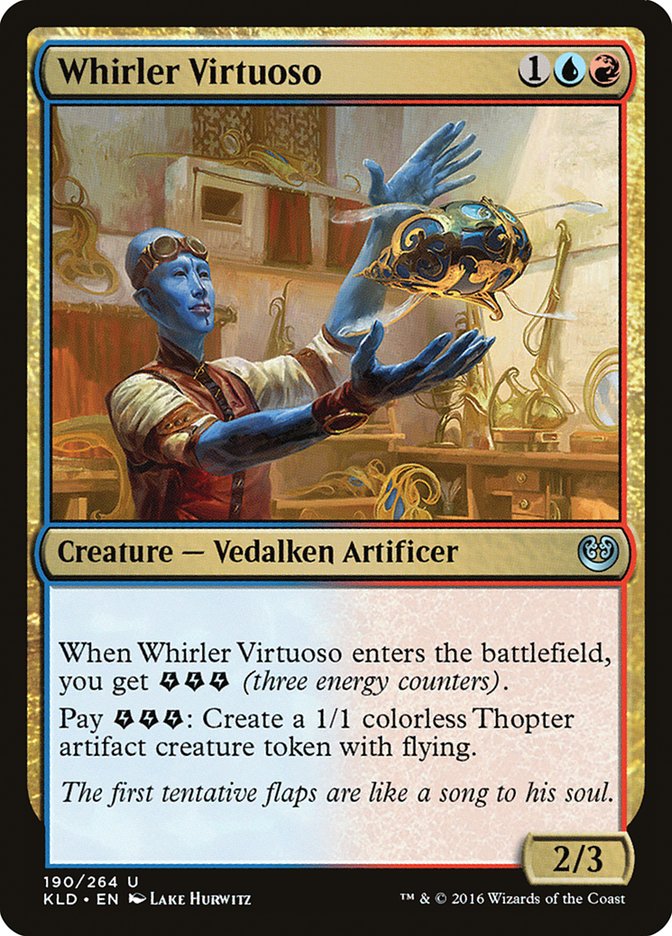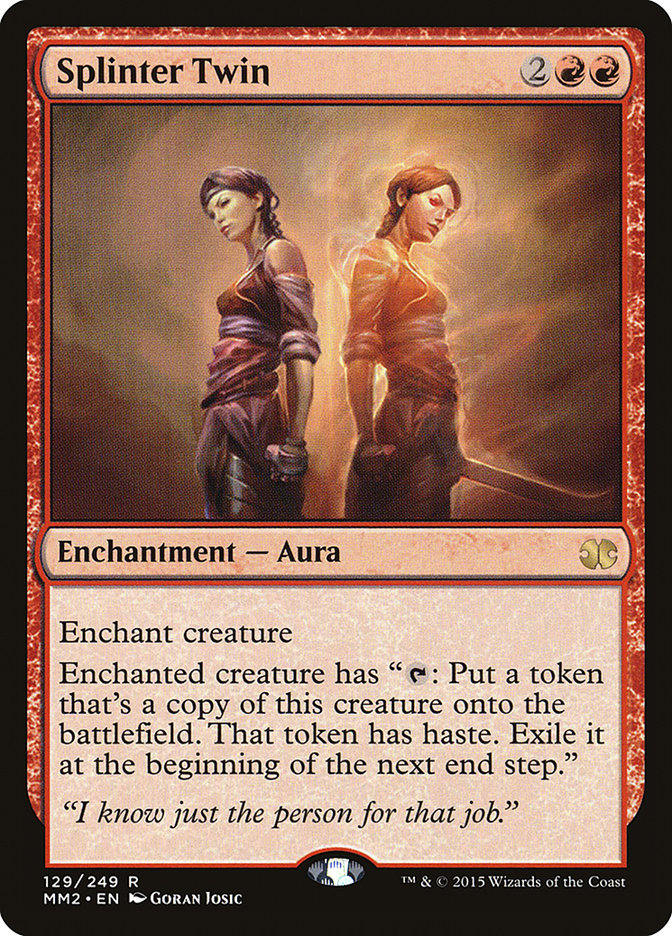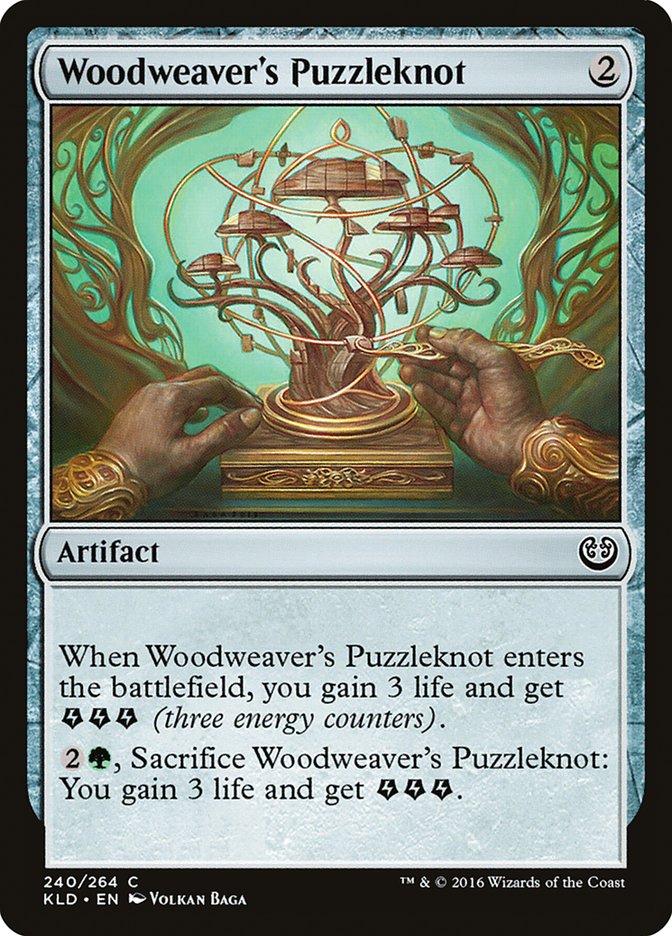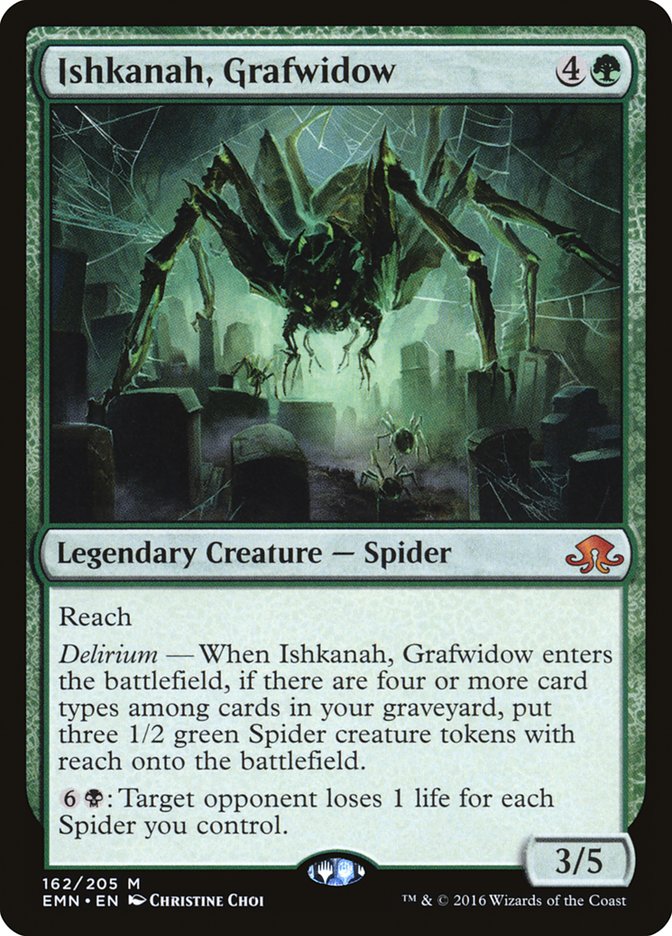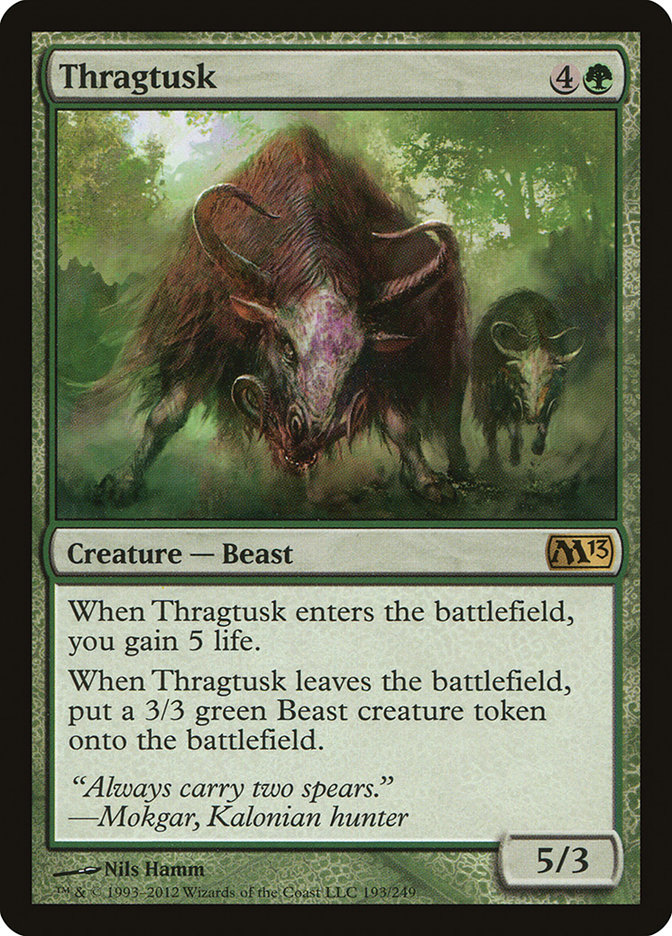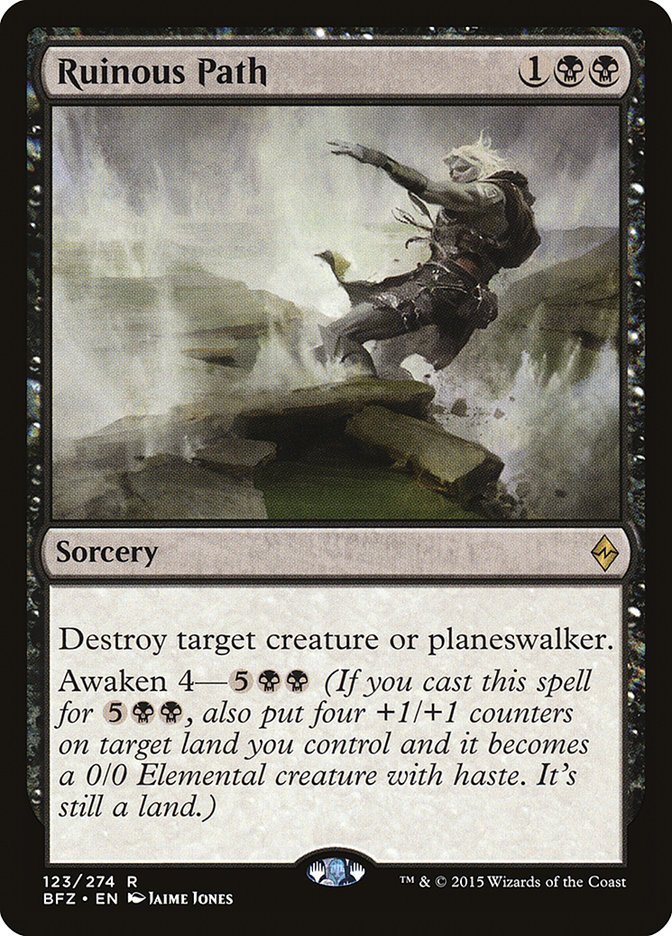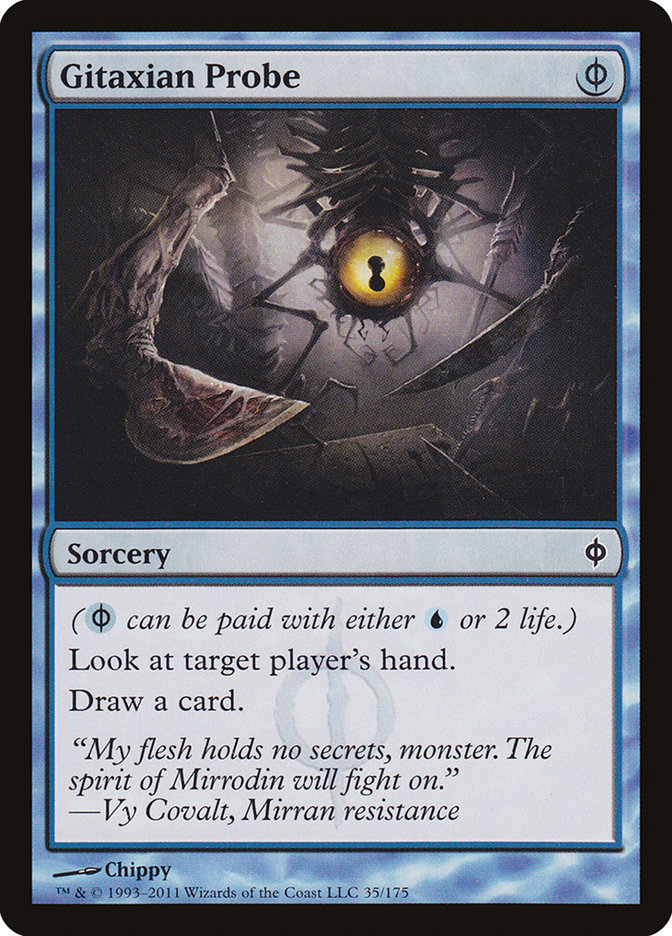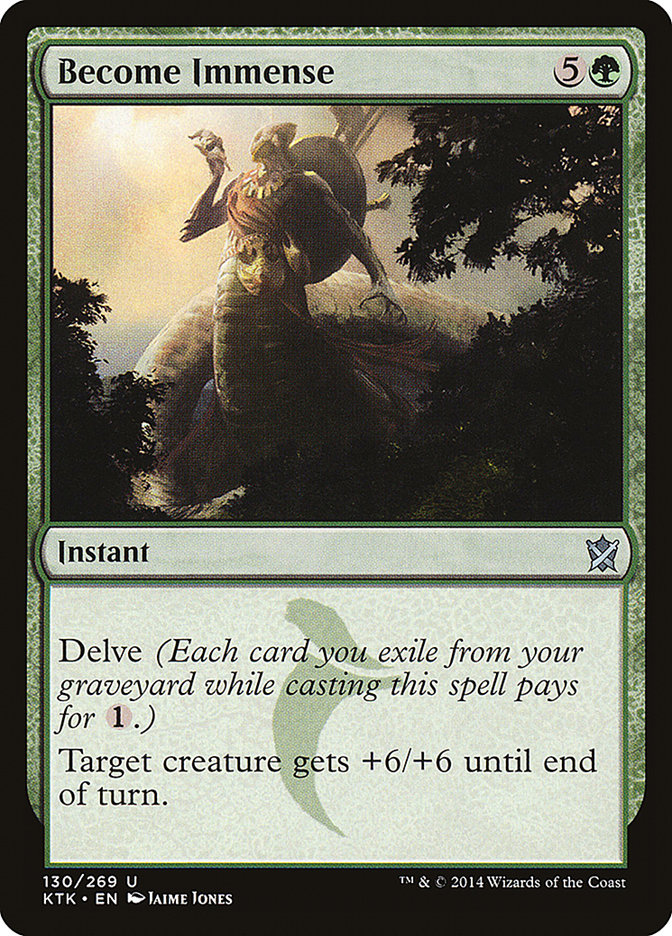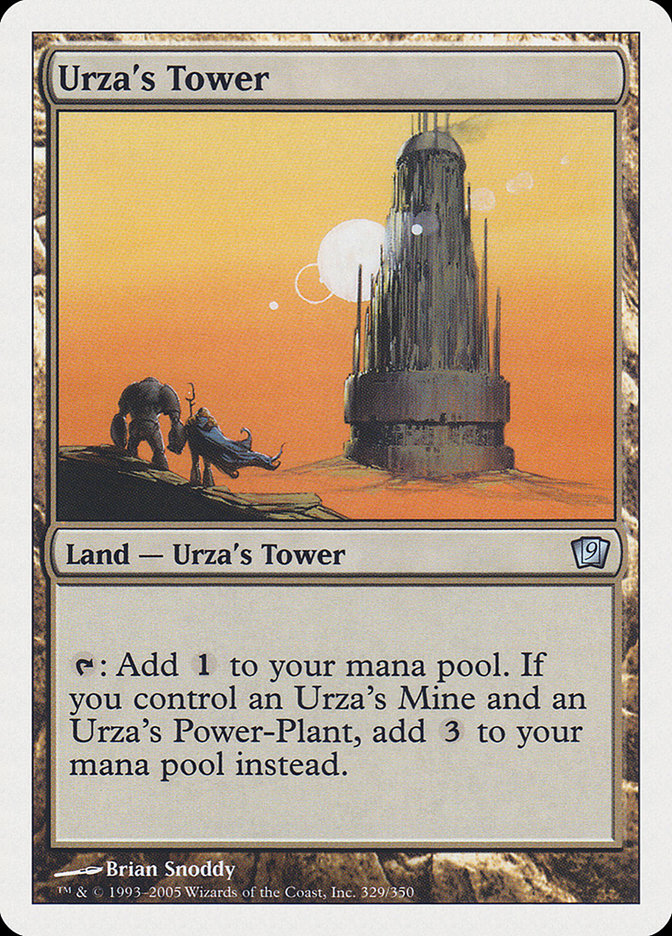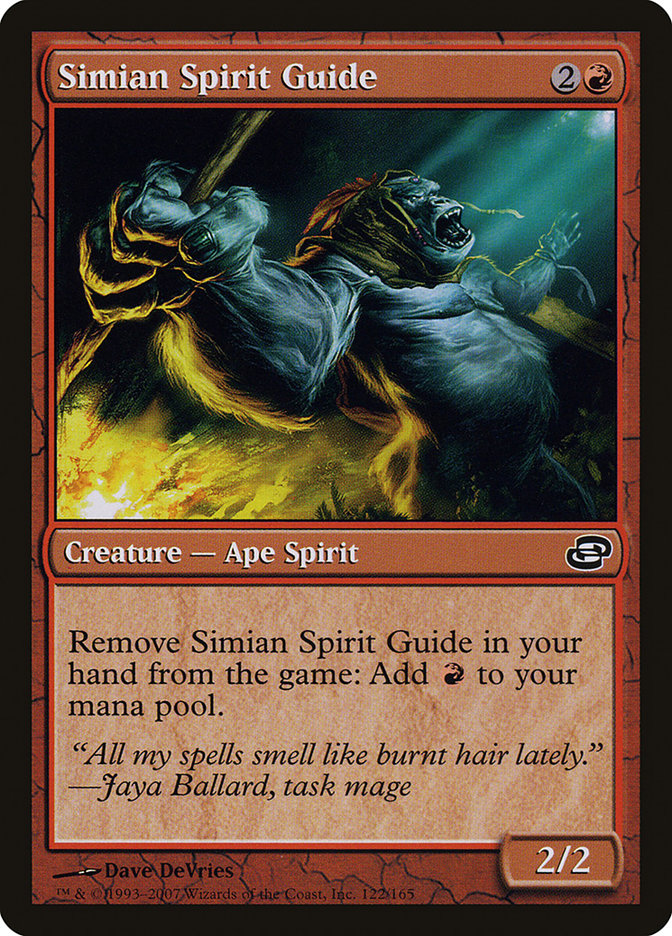The Players’ Championship has come and gone, and with it another great year for Magic. It was a long ride that ultimately ended with me losing in the Top 4 to Joe Lossett, a deserving champion. While I didn’t quite reach my goal of winning the tournament, I was happy with my preparation process, as well as my overall level of play. Brad Nelson and I spent a week testing all three formats, trying to find ways to poke holes in what seemed like solved formats.
Instead of going all lone-wolf and playing U/R Control and Jund for Standard and Modern, I decided to sit back and listen to what Brad (and a few others) had to say. U/R Control seemed like it would be great in a field full of Aetherworks Marvel, but what if it didn’t show up? What if there was a knee-jerk reaction to Aetherworks dominating Standard over the last two weeks and people opted to play Spell Queller, Control, or hyper aggressive white strategies to combat it?
Plus, it is basically impossible for U/R Control to beat a resolved Whirler Virtuoso.
“Game.”
After getting beaten senseless by Brad playing Temur Aetherworks while trying to cobble together card draw, removal, and counterspells, I officially decided that the deck just wasn’t worth playing. But we still feared the Esper Aggro deck that Jim Davis and Kevin Jones played at the Atlanta Invitational, as well as variants of W/R Vehicles from some of the players with a higher chance to metagame or virtually no known information.
As for Modern, Jund just didn’t look good against our expected field. Aside from the two or three people who might play Infect, Jund didn’t seem to be winning on many of the matchups. Two or more possible Tron decks, one or two potential Bant Eldrazi, and a slew of possible Dredge decks meant playing Jund could be a nightmare. Oh, and some of those people could just play Burn. Even if I built my deck “right,” there was a chance I’d get knocked out of the tournament if I ran into a few bad matchups.
And that’s kind of how I felt the entire time we were testing Modern, no matter what deck I chose. It just felt helpless. Even though my results with Jund were great over the last two months, I couldn’t pull the trigger. If I played maindeck Anger of the Gods, it would be mostly dead against one-third or more of the field. If I decided to ignore Tron and build my Jund deck in a way to combat Dredge or other tough matchups, I could very easily get punished for it. So what is the solution?
Creatures (19)
Lands (17)
Spells (24)

Brad’s trusty Death’s Shadow Aggro didn’t seem all that bad. In fact, if I could learn how to play it, I’m assuming it was probably very good. Aside from a few copies of Grixis Delver that could show up and some people going off the rails, Death’s Shadow Aggro had a lot potentially good matchups. Since Modern and Legacy are difficult formats to change decks in, we opted to lock Death’s Shadow Aggro in as our Modern choice.
As for Legacy, that was my specialty. It didn’t take me long to just pick Sneak and Show and run with it. Since there are fewer Legacy tournaments nowadays, you don’t see a lot of the same mutations in maindecks or sideboards to combat popular strategies. It might not have been perfect, but we had two of our three decks pretty early on in testing. And when you’re testing for a tournament featuring three formats, finding the deck you want to play is half the process.
Standard was a tough beast to tame. It didn’t take us long to figure out that basically every deck in the format had unbeatable draws when it was on the play. With Aetherworks Marvel, that included Woodweaver’s Puzzleknot into spinning an Aetherworks Marvel and finding one of the big Eldrazi. Nothing we did, other than counterspells, could beat that draw. And even if we had counterspells, it was still tough fending off the rest of the deck. Whirler Virtuoso out of Temur was a nightmare, and the six planeswalkers from Naya were also rough.
It wasn’t until Brad put the pieces together that we found what deck we wanted to play: G/B Aggro. And the trick was seeing the overall lack of Archangel Avacyn in the format.
W/U Flash was a tough matchup for the deck, but mostly due to Archangel Avacyn. Battlefields could become cluttered in a hurry, with the player on the G/B Aggro side trying to take down a Gideon, Ally of Zendikar. The killer was Archangel Avacyn, usually coming down and eating two or more creatures that tried their best to trade or get Gideon off the table.
Creatures (21)
- 4 Reflector Mage
- 4 Thraben Inspector
- 1 Thalia, Heretic Cathar
- 4 Spell Queller
- 4 Scrapheap Scrounger
- 4 Toolcraft Exemplar
Planeswalkers (4)
Lands (24)
Spells (11)

But after the Invitational and Jim Davis’s Esper Aggro deck mentioned above, it was clear to me that anyone who tested out that version would find it superior to other variations of the strategy. You were more aggressive and had a lower curve, both of which made Spell Queller, Reflector Mage, and Gideon, Ally of Zendikar that much better. While it was rare that you got to bring back a Scrapheap Scrounger from the graveyard, having the extra artifact to power Toolcraft Exemplar was important. Plus, putting six power onto the battlefield on the first two turns is nothing to sneeze at.
And with that, we cemented our third choice. The four or five days that followed, all leading up to Wednesday night for deck submissions, Brad and I were perched in front of computers, battling each other over and over. Ten hours a day, I’d sit at Brad’s house playing the role of the bad guy. And every time I would lose, I’d get mad for a moment before realizing that me losing is a good thing. But being mad is what helped us figure everything out. Once again, I was sitting across from Brad, doing everything in my power to pick his strategy apart. I tried a dozen or so sideboard configurations in every matchup we thought might show up. And all of this led him to finding out the ideal sideboard plan for every situation, play and draw, for each of those matchups.
While neither of us won the tournament, I was satisfied with our testing process. Neither Modern nor Legacy was a disaster, which gave us both a fine shot to win the tournament. Unfortunately, Brad was unable to defeat Jacob Baugh in the Top 8 after running Aetherworks Marvel into Woodweaver’s Puzzleknot, and I eventually fell to Joe Lossett in the Top 4 after a very large and lethal Electrostatic Pummeler.
Could we have done a few things differently to give ourselves a better chance to win? Of course. But hindsight is always 20/20. I was happy with what we came up with based on the information we had, and I thought I played just about as best as I could. And that’s all I’m gonna say about that.
Admitting Your Mistakes
Over the last few weeks, there has been some buzz on how many people dislike the current Standard format. That has inspired me to write about the current health of every constructed format, and what I think could be done to improve them (aside from Vintage, as it is a format I do not play regularly). The first thing that caught my eye was a Tweet by Sam Stoddard:
On a scale of 1-10, what do you think of the current Standard environment now that it is about over? 10 being the best. #WOTCstaff
— samstod (@samstod) December 13, 2016
My reply was a little harsh. As you can probably guess, I’m not a fan of Standard at the moment. I think that there are four cards that warp the entire format and bottleneck people into playing cards or decks that they might not normally play in their maindeck, let alone sideboard. On top of that, many of those cards lead to games that are either woefully lopsided or just end without the opponent understanding “why” they lost.
The Splinter Twin Effect
While Splinter Twin is another argument altogether, I think the idea behind why Splinter Twin got banned is a much better litmus test than anything I could reasonably produce. For years, people lost to the Splinter Twin plus Deceiver Exarch combo, and many could not tell you exactly “why” they lost. In many of the games won by the Splinter Twin combo, you’re behind on resources, creatures, and life total. Much of your effort revolves around assembling this combo that wins the game on the spot. It can be frustrating to have a game all but won on the next turn, only to have your opponent tap one of your creatures or lands and just win the game “for free” when you worked so hard to solidify your position.
In Standard, Aetheworks Marvel operates in much of the same way. Accruing energy seems harmless at first, even tagging alongside the oh-so-maligned resource of gaining life with Woodweaver’s Puzzleknot. But then, out of nowhere, a four-mana artifact is cast, which leads to a downward spiral that is difficult to interact with, difficult to beat, and difficult to understand exactly where or why you lost.
Much of the success of Aetheworks Marvel is due to the presence of Emrakul, the Promised End and the devastating results of a “Mindslaver” turn. When all your cards turn against you; all your creatures decide to attack into Ishkanah, Grafwidow and her tokens; and, at the end of it all, you probably need to topdeck an answer to a 13/13 trampling, flying creature that dodges all instant-speed removal…
It is fun to watch the first time, but an effect like this should require a much larger investment. Even the restriction on casting Emrakul, the Promised End to get the trigger is “cheated” by Aetherworks Marvel. You didn’t pay the mana cost; you shouldn’t get the ability that basically says “you have to pay the mana cost.”
To say both Aetherworks Marvel and Emrakul, the Promised End are frustrating would be a gross understatement. And on top of the entirely ridiculous nature in which the card works, you’re basically spinning a wheel and hoping your top six cards claw you back into the game. You know, since you’re probably behind because you spent your first three-to-five turns accruing energy and digging for said Aetherworks Marvel. Sound familiar?
While Aetherworks Marvel is frustrating to play with, I have also found it equally frustrating to play with. Sometimes you draw two or three Woodweaver’s Puzzleknots but never draw Aetherworks Marvel. Sometimes you draw well but miss on your first activation or two and just die to an aggressive start. I know the deck can be built to make it more consistent, but there is nothing more annoying than drawing your third giant Eldrazi when your hand already has two copies rotting in it, all while your opponent spins their Aetherworks Marvel into running perfects to lock you out of the game.
I didn’t come here to gamble.
Should Aetherworks Marvel be banned? I think so. There is something comical to me about a card like Aetherworks Marvel actually getting through the development process. The best-case scenario is that it is unplayable. And right now, we’re in the middle of the worst-case scenario. Some people might argue that the Eldrazi are to blame, like most things that went wrong in the last year. I say it is just a slight tilt toward making the game more fun for the casual crowd at the expense of making the tournament experience much worse. It is a fine line to walk, but you have to learn to admit when you’ve made a mistake, correct it, and move on.
The Big Three
Outside of Aetheworks Marvel, we have three pillars of Standard that dominate how the format operates. Before people understood just how absurd Aetherworks Marvel could be and how it could be built in such a way that it played like a normal deck with a combo finish, there stood three pillars of the Standard format. And still, in the wake of Aetherworks Marvel, those three pillars are still strong.
I hate cards like this. I hated Thragtusk, even though I chose to be a Beast token. I hated the fact that Unburial Rites and Restoration Angel were ever in the same format as Thragtusk. I hated that you could build your entire deck around recurring a creature that made it basically impossible to lose the game if you cast it enough times.
Ishkanah, Grafwidow is this year’s Thragtusk, and I hate it just the same.
Should it be banned? Probably not, but that doesn’t mean I won’t hate it while it is in Standard for the next year. The games revolving around Ishkanah, Grafwidow are similar to the games that revolved around Thragtusk. You can keep fighting, but odds are that you’re eventually going to lose. While Ishkanah, Grafwidow is soft to counterspells, much like Thragtusk, the overarching theme of making blue decks weaker while scaling creatures upward in power level just doesn’t make sense to me. But again, there is a balance that needs to be struck. Mana Leak would have been far too good in the W/U Flash deck and probably put it miles above every other deck in the format.
I don’t know what the solution should be in the case of Ishkanah, Grafwidow, but I would be much happier knowing that it didn’t exist in the first place.
This one is a big reason why Aetheworks Marvel is on the naughty list this Christmas. It has led to some very bad blood when it comes to the Standard format. If you want an in-depth piece on Emrakul, the Promised End, I highly suggest reading Michael Majors’s article from earlier this week.
Should Emrakul, the Promised End be banned? I honestly think so. The power level versus cost of this card is much higher than that of similar cards in recent years. And we get it already. Emrakul, the Promised End came to Innistrad or whatever and wrecked up the place. But Emrakul was defeated. Just ban it so we can win too.
When Battle for Zendikar was first spoiled, this was at the top of my list for cards I thought would dominate Standard. And across three different Standard formats, including two rotations, Gideon, Ally of Zendikar has shown his ugly face in all three. From Abzan Aggro to G/W Tokens to W/U Flash, Gideon has made his presence known in the Standard format. And I was honestly looking forward to it rotating sooner rather than later.
But with the recent announcement that Standard rotations would happen once per year instead of every six months, a feeling of dread started to swell in my stomach. Not only are we forced to deal with Gideon for an extra six months, but that means annoyances like Aetherworks Marvel are going to stick around longer than expected. Imagine, just under two years from now, someone spinning an Aetherworks Marvel for the thousandth time and casting Nicol Bolas, God-King of Amonkhet or whatever else.
But Gideon, Ally of Zendikar is particularly annoying in this regard because it singlehandedly wins the game. It doesn’t need another combo piece. Of all the other cards I’ve talked about today, it doesn’t actually need help to win the game. Sure, Reflector Mage and other removal spells help protect it. Archangel Avacyn and Selfless Spirit give all your creatures indestructible when your opponent goes to attack it. But they aren’t necessary.
I’ve played a lot of control decks in my life, and I’ve lost singlehandedly to Gideon, Ally of Zendikar more times than I can count. Since counterspells are generically worse, and removal spells no longer freeroll-kill planeswalkers (dang, we had it good with Hero’s Downfall), cards like Gideon, Ally of Zendikar are much tougher to beat.
“But Todd, Ruinous Path is like a sorcery-speed Hero’s Downfall!”
You’re right. And on that turn where you tap out to cast that Ruinous Path, you’re unable to cast a counterspell on the next turn and you lose to the next ridiculously undercosted, overpowered, creature-based threat.
Should Gideon, Ally of Zendikar be banned? Probably not. White decks tend to be very bad without their crutch planeswalker. But I think that’s more of a problem with the theory behind the color pie in Magic. White never truly had its own identity. Gaining life is far less powerful than dealing damage, let alone drawing cards or taking away your opponent’s resources.
The real pressure of banning any of the “big three” is that it will leave a power vacuum in the Standard metagame. Gideon, Ally of Zendikar is one of the few cards that generates enough pressure to actually attack through an Ishkanah, Grafwidow. And if they actually did decide to ban one of these three cards, chances are they’d have to ban all three. Otherwise, the decks that can utilize the other two would see a dramatic increase in play.
I don’t envy the good people at Wizards of the Coast that have to make the decisions like this. Banning a single card can leave a bad taste in your customers’ mouths. I can only imagine what would happen if two or more cards got banned at the same time in Standard.
Modern in a Nutshell
Modern and I go a long way back. If you read my articles, you’d understand just how much I care about the health of this format. From time to time, I get angry when things start to turn south, but for the most part I’ve agreed with a lot of the bannings and unbannings they’ve decided upon. But honestly, some of these decisions are starting to make less sense than they did before.
Best-case scenario (again): the card is unplayable. The worst-case scenario is you have people putting twelve or more power onto the battlefield on the second turn with a Fireball for X equals four or six waiting in the wings for next turn. Cards like Golgari Grave-Troll are never the problem, though. In actuality, the Dredge mechanic has always been, and will always be, one of the biggest mistakes ever made in Magic design.
Ban it again. Please. Dredge can still function without it. Banning anything else would just be insulting.
I love this card. I love all Phyrexian-mana spells. But after playing Death’s Shadow for the last week and a half, I can honestly say that the fewer cards like Gitaxian Probe exist, the better. Having perfect information while fueling delve is problematic, and it makes me unhappy that I will no longer be able to cast Young Pyromancer and get a freebie token, but do it anyway.
Ban it.
Ban it.
Ban it. Ban it. Ban it.
Ban it, or give me back my Ponder and Preordain. Card does literally the same thing.
Ban it.
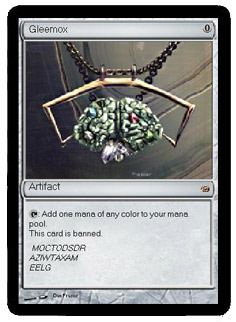
…unban it?
In all seriousness, I think Modern is in a fine place right now. There are some things that could be done to shift the power slightly in the direction of interaction, but I don’t want to kill decks completely. I want them to slow down just a little bit. Or, at the very least, I want a few cards to come off the ban list to improve fair decks.
Combo decks are, at their heart, non-interactive. And that type of Magic is something that some people like to play. I don’t want to take away that element of the game; I just don’t want it to be all there is to an entire format. When the top decks in a format are Infect, Dredge, Tron, Death’s Shadow, and Burn, you could do worse than making Bloodbraid Elf legal again.
What Wizards of the Coast decides to do with the release of Aether Revolt is entirely up to them. They understand that people are unhappy with Standard, and I think they will act accordingly. If they don’t, then I might have a thing or two to say about it.
Until then, keep jamming Modern. Nothing else matters.


